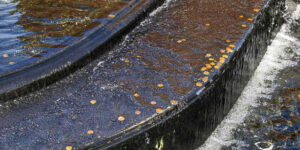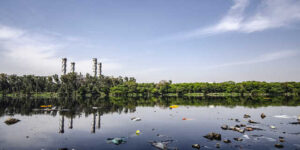Introduction
Floodgate operations play a vital role in managing river basins and controlling water flow. These operations can alter the natural structure, flow process, and surrounding environment of rivers. However, there is limited analysis on how small floodgate operations impact water quality in river networks and how urban floodgate infrastructure regulates pollution. In this article, we will delve into a study done by team Lan Feng from Nanjing Forestry University, Nanjing, China that employs a hydrodynamic-water quality model, MIKE 11, to assess the water quality response in Wuxi’s river network under various urban floodgate infrastructure design scenarios. Specifically, we will focus on two key pollutant indicators, the permanganate index (CODMn) and ammonia nitrogen (NH3-N).
The Study
The researchers used the one-dimensional hydrodynamic-water quality model, MIKE 11, to simulate and analyze the water quality response in Wuxi’s river network. This model allowed them to study how different design solutions of urban floodgate infrastructure affected water quality. The researchers measured the concentrations of two major pollutants, CODMn and NH3-N, to understand the variations in water quality under different floodgate operation scenarios.
Results and Findings
The study considered three design scenarios for floodgate operations, namely:
- 0.7 m design solution scenario
- 1.4 m design solution scenario
- 2.1 m design solution scenario
The researchers observed the following trends in water quality based on these scenarios:
- Impact on CODMn and NH3-N Concentrations: The researchers found that the concentrations of CODMn and NH3-N decreased in the following order: 1.4 m design solution scenario > 2.1 m design solution scenario > 0.7 m design solution scenario. This indicates that higher floodgate openings generally led to better water quality outcomes.
- Maximum Decrease in Pollutant Concentrations: Under the 1.4 m scenario, the study recorded the most significant improvements in water quality. The CODMn concentration decreased by 37.57%, and the NH3-N concentration decreased by an impressive 206%.
- Water Quality Improvement Downstream: The researchers noted that water quality improvements were significantly better in the downstream areas of the river network compared to the upstream areas. This suggests that floodgate operations have a more substantial positive impact on water quality downstream.
- Seasonal Variation: The study found that changes in pollutant concentrations during the flood season (June–September) were notably lower than those observed during the dry season (October–February) and the flat water season (March–May). This indicates that floodgate operations have a more pronounced effect during non-flood seasons.
Implications and Future Research
The findings of this study provide valuable insights into the ecological operation of small floodgates and their impact on water quality. Understanding the correlations between floodgate operation scenarios and water quality improvements can aid in the development of effective river basin management strategies. Moreover, these results open up new avenues for further research in the field of water environment effects and small floodgate operations.
Conclusion
Floodgate operations are crucial for river regulation and basin development. This study using the MIKE 11 model sheds light on the multiple impacts of small floodgate operations on water quality in river networks. By considering different design scenarios for urban floodgate infrastructure, researchers discovered that higher floodgate openings generally lead to more substantial improvements in water quality, especially downstream. The study’s results offer essential theoretical support and novel insights for future research on the ecological operation of small floodgates and their impact on water quality in river basins.
Photo by Nicole Geri on Unsplash







